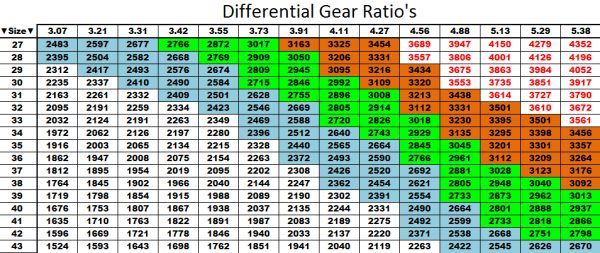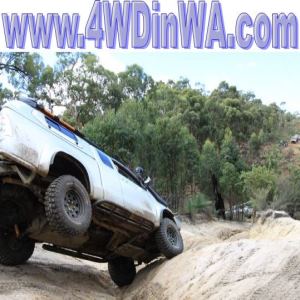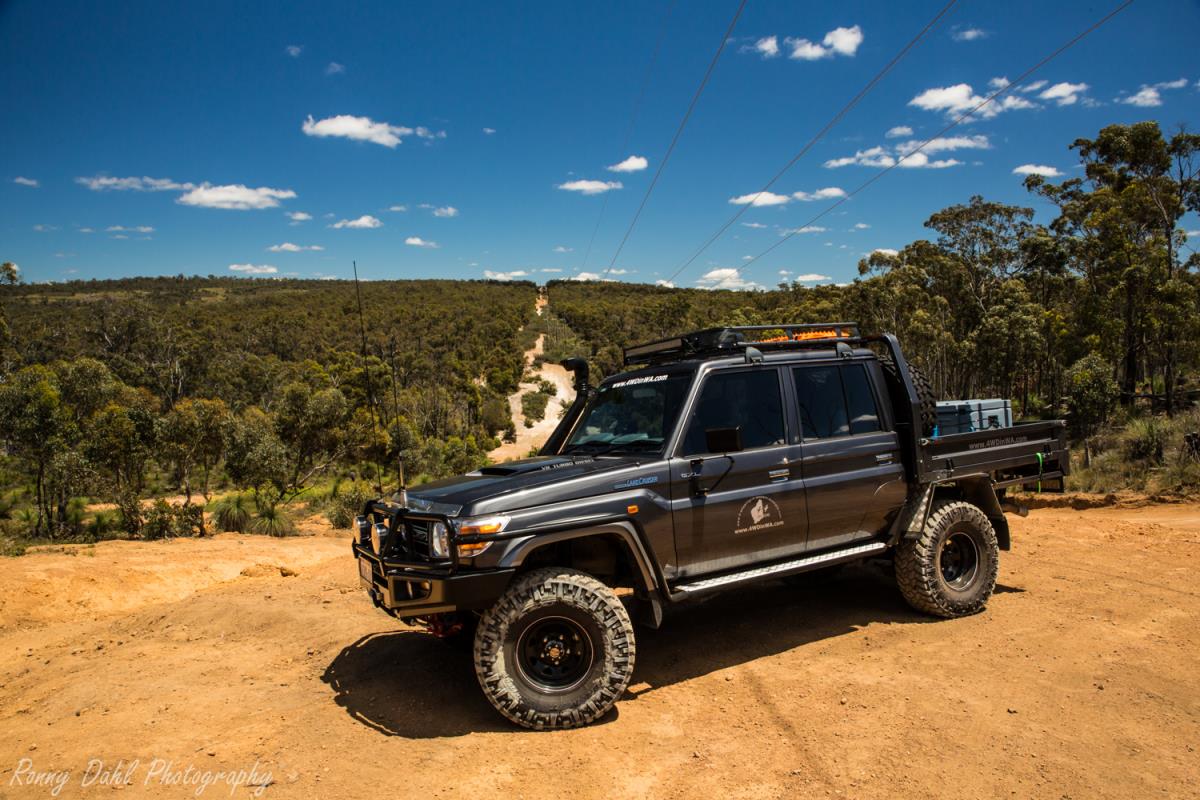
Differential Gear Ratio
(also known as Final gear)
Changing
a diff to better suit larger wheels/tires is a good idea and in some cases is a
must.
If fitting larger tires to a 4x4 which are 3-4 sizes bigger (stock was 30 inch,
new tires 33-34 inches) or even larger than that, it will affect the way the
vehicle will drive.
The differential gear ratio on a stock standard 4x4, are made to suit the
tire diameter which the vehicle is released with.
Using bigger diameter wheels/tires with stock ratios will cause more wear and tear on clutch, driveline and engine.
Low range gear will also suffer as 1st gear low will now roll too fast as the tires are bigger, this becomes a problem when descending steep hills and climbing rocks and logs.
How to fix the problem:
Example: a stock 2005+ Toyota Hilux has 29 inch wheels/tires and fitting 33 inch rubber is quite bigger (4 inches in diameter bigger) this
will cause the engine and entire driveline more stress and more power is then required due to the larger rolling resistance.
The final gear ratio is suited for 29 inch, this ratio in this particular case is 3:5, referring to a chart it will state the same (29' recommended ratio is 3:5) and looking at 33 inch diameter the chart will recommend 4:1.
Going by the chart any higher will make the 4x4 rev too much at highway speeds causing poor fuel economy.
Changing the crown wheel and pinion is how the ratio is modified. Basically
installing a new or reconditioned crown wheel and pinion with the recommended
ratio will bring the 4wd driveline back to stock specification rpm and fuel
usage.
Once differential gear ratio mod is done the vehicle will regain its 1st gear low range and take off in high range will be improved or even back to stock.
Differential Gear Ratio Chart:


This chart is an approximant tyre size to differential gear ratio; it’s based on an RPM at 105 km/h (65 mph) and 4th gear on a manual transmission or 3rd gear on an automatic gear box (1:1 gear ratio).
This is only a guide to get a general idea of which ratios would suit the vehicle in question.
To get an accurate RPM the following steps and formula will give an accurate answer:
Take a drive and record the rpm at 105 km/h (65 mph), the next step is to work out what the current ratios are in the vehicle. This can be revealed by calling the manufacturer or even calling a differential repairer giving him/her the Vehicle Identification Number, also known as VIN.
Once all this information is known use the following formula to get the accurate differential gear ratio for the larger tires:
Example:
The rpm is 2806 at 105 km/h (65 mph), the current tires are 29 inch, the factory ratio is 3.73 and the new size upgraded tires are 33 inch.
RPM: 2806
Stock tires: 29 inch
Stock ratio: 3.727
New Tyre size: 33 inch
2806 = 65 x 3.727 x 336 / 29 (rpm = mph (not km/h) x diff ratio x 336 / tire size)
Now the correct rpm is known for the vehicle (2806), the next step is working out what ratios are available for the vehicle, some makes and models won’t have as many choices as others.
Say the following 3 ratios are available 3.909, 4.100 & 4.88.
The new tire size wanting to be fitted is 33 inch and the rpm needs to be a close to the 2806 as possible in order to keep it to stock specs. Just a quick scan at the differential gear ratio chart it’s obvious that a ratio of 3.909 is too low at 2587 rpm, ratio of 4.88 is too high at 3230 rpm. But looking at 4.10 with the rpm at 2713 is the closest to 2809 stock rpm.
New Specs:
RPM: 2713
New tires: 33 inch
New ratio: 4.10
Fuel Economy after the tire & diff mod:
Even with the help from the differential gear ratio chart and the right diff ratio installed, the vehicle will never regain its fuel economy it had before simply due to the fact that larger tires will have a bigger rolling resistance.
A reason for not changing diff ratio:
This
is not always required as keeping to stock differential gear ratio with only a slightly bigger tyre size can help
with fuel economy at higher speeds. This happens as a larger tyre will reduce
the amount of rpm at speed.
Example: 29 inch diameter at 100kph = 2674 rpm in 4th gear manual or 3rd gear automatic (gear box ratio of 1:1) with 31 inch diameter at 100kph = 2501
rpm in 4th gear (gear box ratio of 1:1). At cruising speeds on a highway 100kph
this will save fuel.
When & why you should regear your Wrangler, technical guide & approximately cost click here.
Recent Articles
-
4x4 off road tracks 0 to 250 km from Perth
Nov 21, 23 07:40 PM
On this page we cover 4x4 off road tracks within a 250 km radius from Perth... -
4 Wheeling Around Jurien Bay.
Nov 21, 23 07:35 PM
Jurien Bay 4x4 tracks info and general information about the area... -
Carnamah caravan Park WA
Oct 10, 23 09:31 PM
This caravan park is very clean. The ablutions are spotless. The washing machines are free but need to keep them clean. Easy parking for big rigs and if
- Home
- 4x4 Drive Train
- Differential Gear Ratio
Leave Differential Gear Ratio And Go To 4 Wheeling Home Page.





